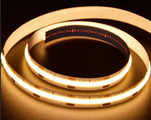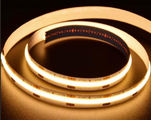Are Neon Strip Lights Energy Efficient?
When considering lighting options for any project, energy efficiency is a crucial factor. Neon strip lights, especially those using LED technology, stand out as a particularly efficient choice. Here’s a breakdown of their energy consumption compared to traditional lighting solutions, along with other benefits that make them a smart and eco-friendly option.
Understanding the Efficiency of LED Neon Lights
Neon strip lights have evolved significantly with the introduction of LED technology. Unlike traditional glass neon tubes that use neon or argon gases, LED neon strip lights utilize light-emitting diodes. This difference in technology brings a substantial gain in energy efficiency.
Traditional Neon vs. LED Neon: Traditional neon lights consume approximately 20 watts of power per foot, whereas LED neon strips typically require only about 1.2 watts per foot. This represents an energy saving of over 90%, making LED neon strips a far more economical and sustainable option.
Power Consumption Details
The actual energy consumption of neon strip lights can vary based on color and brightness. Generally, these lights operate within a range of 4 to 22 watts per meter. To put this into perspective, a 10-meter installation of LED neon strip lights could use as little as 40 watts or as much as 220 watts, depending on the specific characteristics of the strip. This is a stark contrast to traditional lighting options like incandescent bulbs, which may consume up to ten times more power for comparable brightness.

Longevity and Cost Savings
Durable and Long-Lasting: LED neon strip lights are not only energy-efficient but also incredibly durable. They have an estimated lifespan of up to 50,000 hours, significantly longer than traditional neon lights. This extended lifespan reduces the need for frequent replacements, contributing to both lower maintenance costs and less waste generated over time.
Reduced Heat Emission: Another advantage of LED neon lights is their low heat emission. Traditional lighting solutions often waste a lot of energy through heat, but LED technology minimizes this loss, ensuring more of the energy is used for lighting. This not only enhances efficiency but also improves safety by reducing the risk of heat-related damage or accidents.
Versatile and Cost-Effective Installation
Simplified Installation: Installing LED neon strip lights is generally less complex and costly compared to traditional neon lighting. Their flexibility and the absence of fragile glass components make them easier and safer to work with. This simplicity translates into lower installation costs and less time spent on setup.
Discover how Neon Strip Lights can be a cost-effective and energy-efficient solution for your lighting needs, whether for commercial, residential, or artistic projects.
Final Thoughts
Neon strip lights, particularly those based on LED technology, offer a highly energy-efficient alternative to traditional lighting systems. Their low power consumption, combined with long lifespan and reduced heat emission, not only saves money but also contributes to a more sustainable environment. Whether you’re lighting up a room, a sign, or an art installation, LED neon strip lights provide a bright, efficient, and stylish solution.





